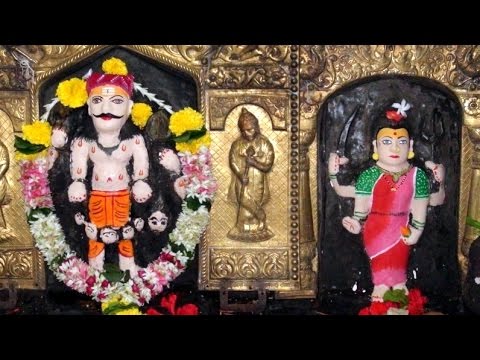Harihareshwar
The southernmost point of District Raigad is Harihareshwar, the abode of Gods. In the
Sahaydri Volume of the Puranas, the holiness of the place has been described. Because
of its holy status it is also called the Kashi (Benares) of the South. The districts of
Ratnagiri and Raigad are demarcated by the wide expanse of River Savitri. On one side
is Savitri River, also known as Bankot Creek and on the other side is the huge expanse
of the ocean and jutting out into the sea is a promontory that is Hariharswhar.
The hill on the seashore at Harihareshwar is also known as ‘Harihar’ or ‘Pushpadri’. The place here
in Harihareshwar is surrounded by four holy hills named as Harihareshwar, Harshinachal, Bramhadri
and Pushpadri. The temple is extremely calm and silent and is indeed a great place for prayer and
meditation and remembering the creator of the nature. People come up here and offer
‘Pradakshina’ (prayers and rituals). The beach view from the temple is breathtaking. Harihareshwar
is often referred to as Devghar or house of God because towards the north is the temple of
Harihareshwar which is said to have been blessed by Lord Vishnu. Even the sacred river Savitri
enters the sea from the town of Harihareshwar.
There is a small garden on the left as one enters. The Ganapati and Maruti temples are located here. There is also a well known cave known as Brahmakoop
Legend has it that it was dug personally by Lord Brahma. The temple consists of idols of Brahma - Vishnu - Mahesh and Devi Parvati. The other temples in the
premises are of ShriKalbhairav and ShriYogeshwari. Nearby are two stone light-pillars ( deepmalas) twenty feet high. In front is the Shri Harihareshwar Temple and
next to it the Kalbhairav Temple. All the temples are tiled in a typical Konkani manner. Tradition dictates that one first worships at the Kalbhairav temple, then at
the Harihareshwar, does a one and a half circumambulation , including worships at the Ganapati and Nandi and then again at the Kalbhairav temple.
Shri DevKalabhairav
In most places, along with Mahadev, Kalbhairav is also worshipped. In the Varaha age, there was a demon named Shataghna. To kill him Lord Mahadev in a very
angry mood opened his mouth and spewed out flames. Out of this even a more fierce god emerged. This was Kalbhairav.
Historical Information
Although Harihareshwar is an ancient place, the temple one sees today is from the Peshwa period. An inscription at the Kalbhairav temple records that it was
renovated by the Peshwa in 1723. Chandrarao More of Javali built the steps. Shivaji Mahraj had visited Harihareshwar in 1674 while Samarth Ramdas Swami
came here after visiting Mahableshwar. At the end of the Peshwai, from 1818 to 1841 the temple was being looked after by the British. In 1842 a managing
committee was formed till a trust was created in 1953.
Order of Worship at Harihareshwar
Tradition dictates that one first worship at the Kalbhairav temple, then at Harihareshwar, does a one and a half circumambulation around the shrines, including
worships at the Ganapati and Nandi and then complete the prayers at the Kalbhairav temple.
Pradakshina Marg
The 'pradakshina marg' around the Harihareshwar temple is one of the most interesting part of the temple. The 'pradakshina marg' starts off right behind the
temple with about sixty steps before the 140 narrow steps cut in the cliff down to the sea. The trail goes around the cliff over a natural rock platform with the
roaring sea just by the side and comes back in front of the temple. Check with locals about the tide before attempting the
Tradition dictates that one first worship at the Kalbhairav temple, then at Harihareshwar, does a one and a half circumambulation around the shrines, including
worships at the Ganapati and Nandi and then complete the prayers at the Kalbhairav temple.


